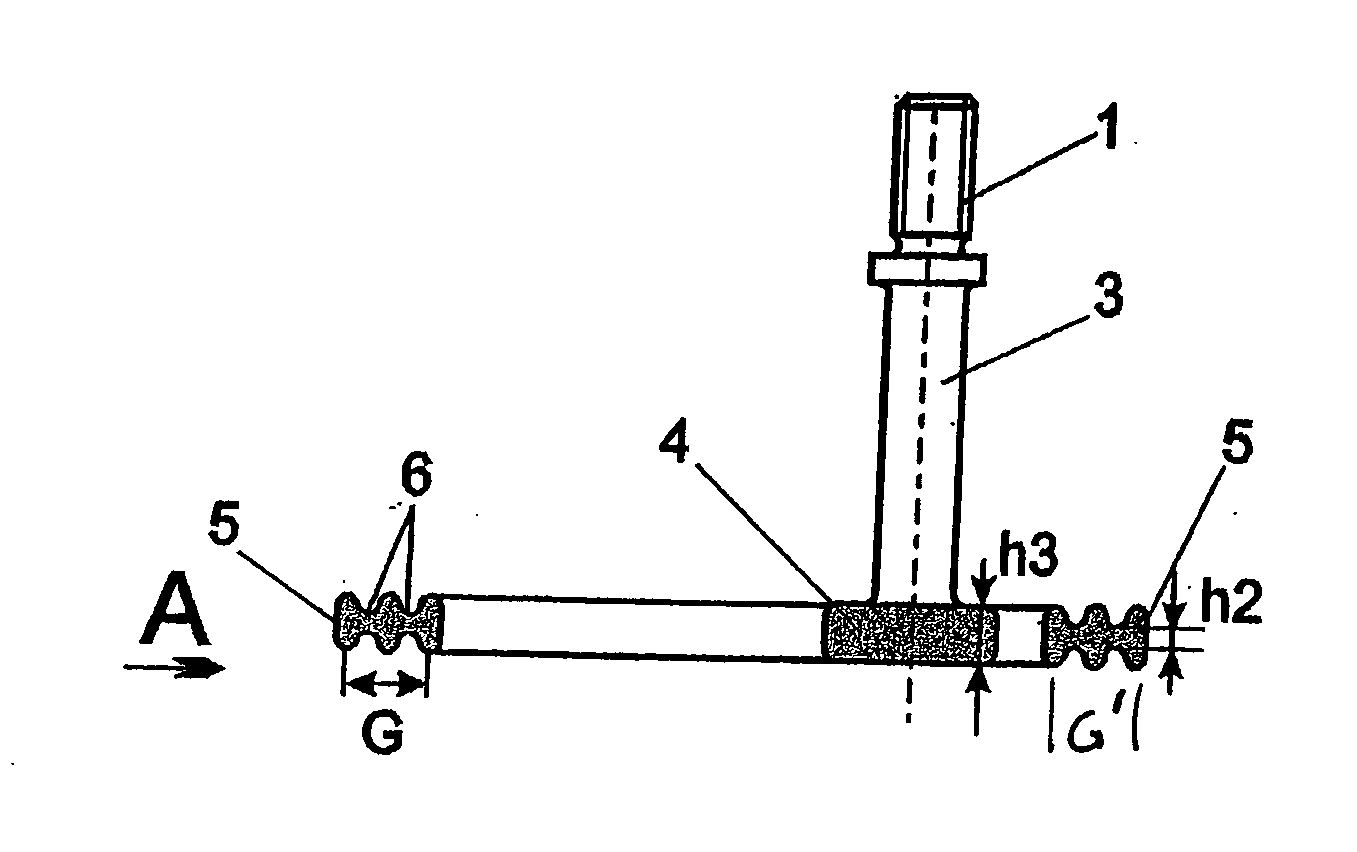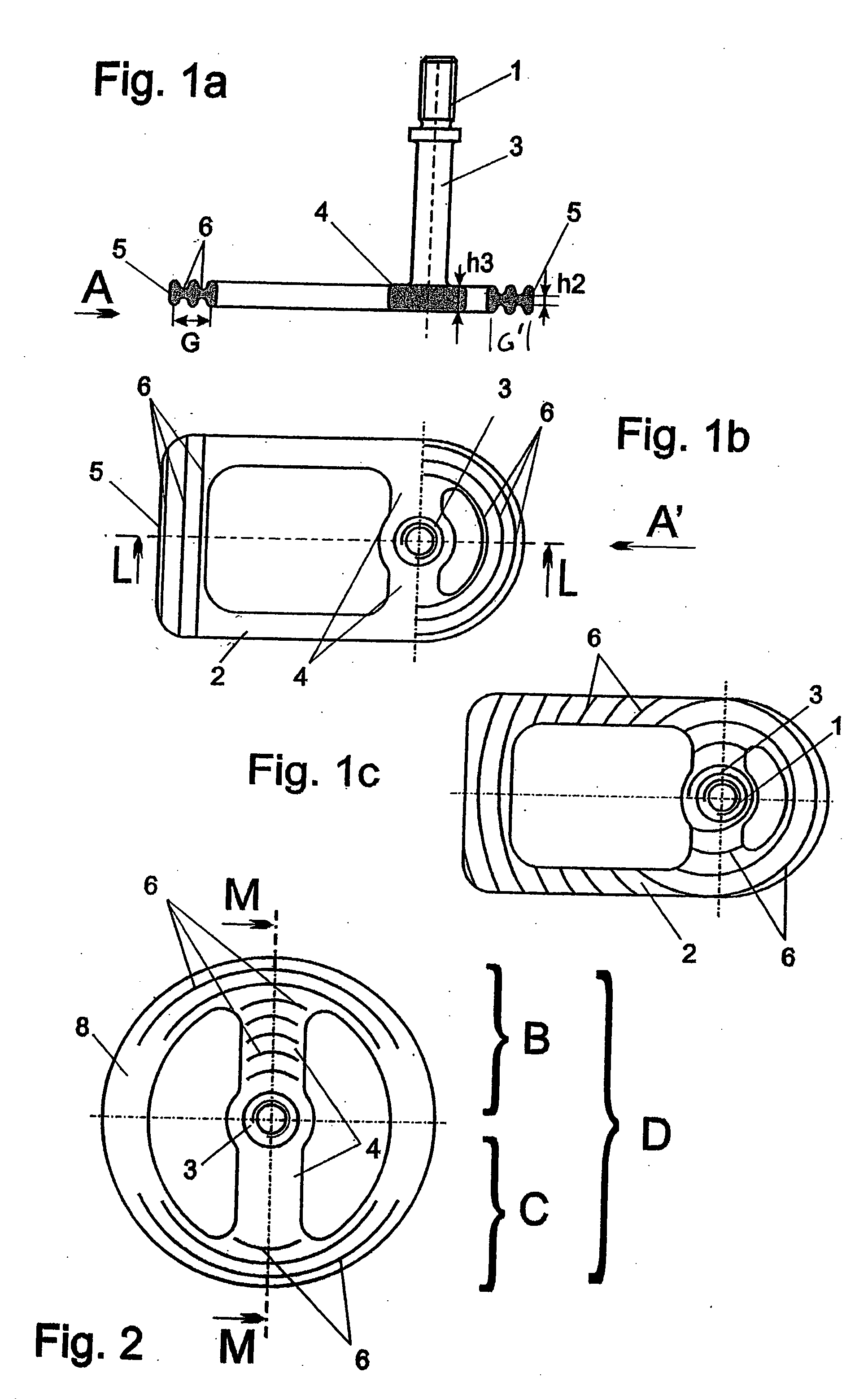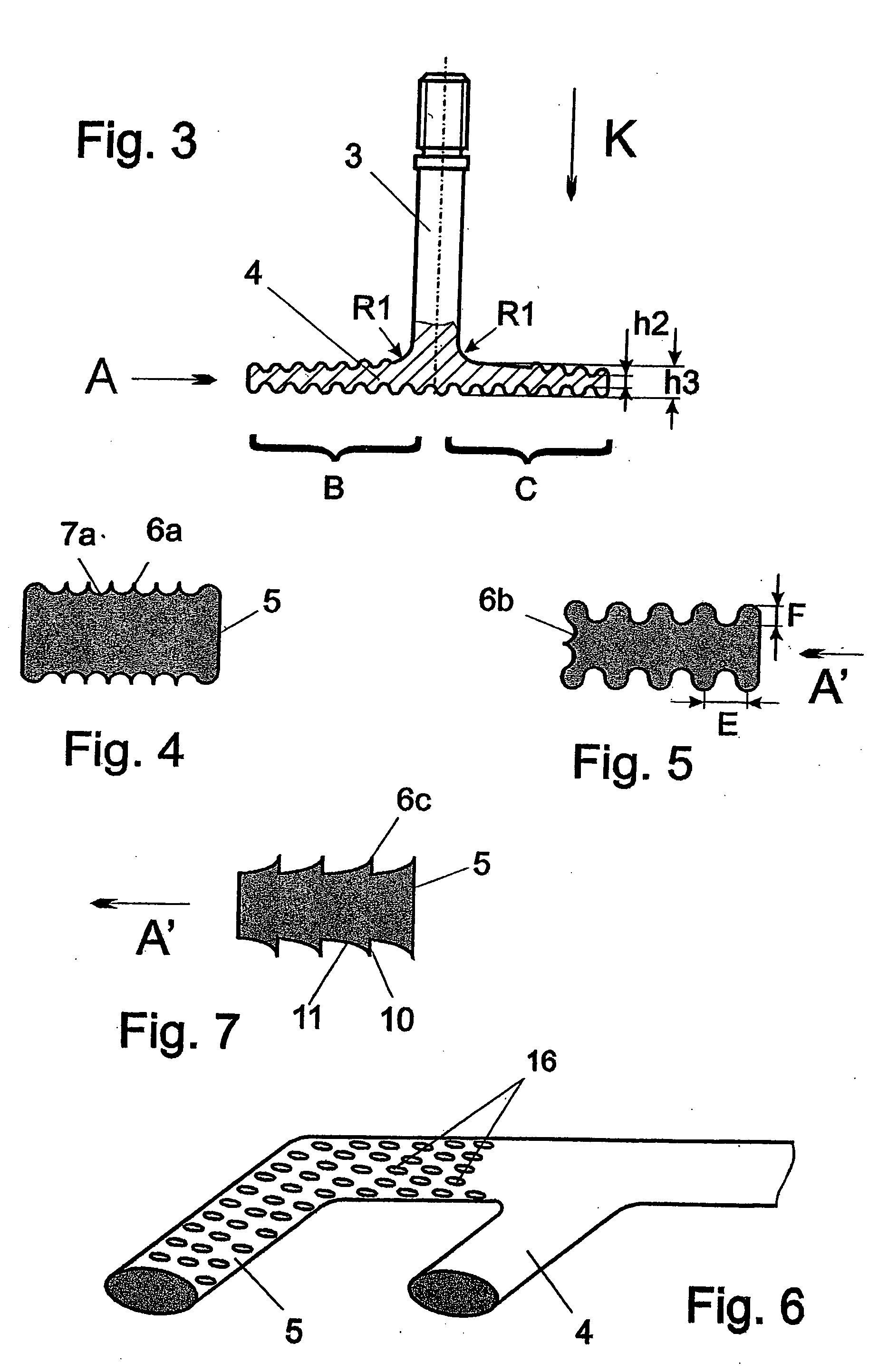Bone-adaptive surface structure
a surface structure and bone technology, applied in bone implants, medical science, dentistry, etc., can solve the problems of polymetallosis, inability to apply macromechanical surface structures to lateral implants, and inability to reduce costs, so as to improve the in-growth rate, improve the initial strength, and be easily inserted
- Summary
- Abstract
- Description
- Claims
- Application Information
AI Technical Summary
Benefits of technology
Problems solved by technology
Method used
Image
Examples
Embodiment Construction
[0048] As can be seen in FIG. 1a, a screw thread 1 is provided at a distal end of a shaft 3 for connecting with a prosthesis (not shown). The thread can be an internal or external thread. In appropriate circumstances the prosthesis can be adhesively secured, as by an epoxy. FIG. 1b shows a base 2 in the form of an annular body of a lateral dental implant. A bar 4 connects the shaft 3 to the base 2. It has been determined that implants of this type transfer the masticatory force essentially into the peripheral annular section of the base 2, indicated here by 5, which is anchored in the cortical jaw bone. As shown in FIGS. 4, 5 and 7, numerals 6a, 6b and 6c indicate various surface structures embodying the invention that may be on the base 2. In FIG. 1a, the letter G indicates the width of an outer ring of the base 2 or of a base 8 (see FIG. 2).
[0049] In the embodiment shown in FIG. 1b, the surface structures are formed by periodic grooves 6 which can run parallel with each other, as...
PUM
 Login to View More
Login to View More Abstract
Description
Claims
Application Information
 Login to View More
Login to View More - R&D
- Intellectual Property
- Life Sciences
- Materials
- Tech Scout
- Unparalleled Data Quality
- Higher Quality Content
- 60% Fewer Hallucinations
Browse by: Latest US Patents, China's latest patents, Technical Efficacy Thesaurus, Application Domain, Technology Topic, Popular Technical Reports.
© 2025 PatSnap. All rights reserved.Legal|Privacy policy|Modern Slavery Act Transparency Statement|Sitemap|About US| Contact US: help@patsnap.com



